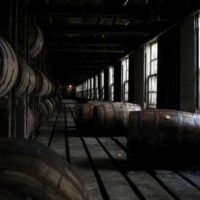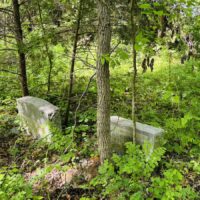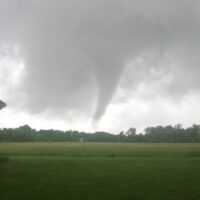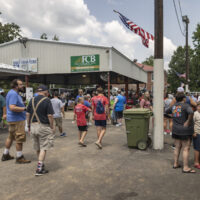This small piece of glass measures 4 inches wide, 5 inches long and 1/16 inch thick. The back is extremely delicate. A black coating of emulsion is adhered to the glass and reveals an image captured more than 100 years ago.
This month, I present to you a glass plate negative taken by Edgar Cayce.
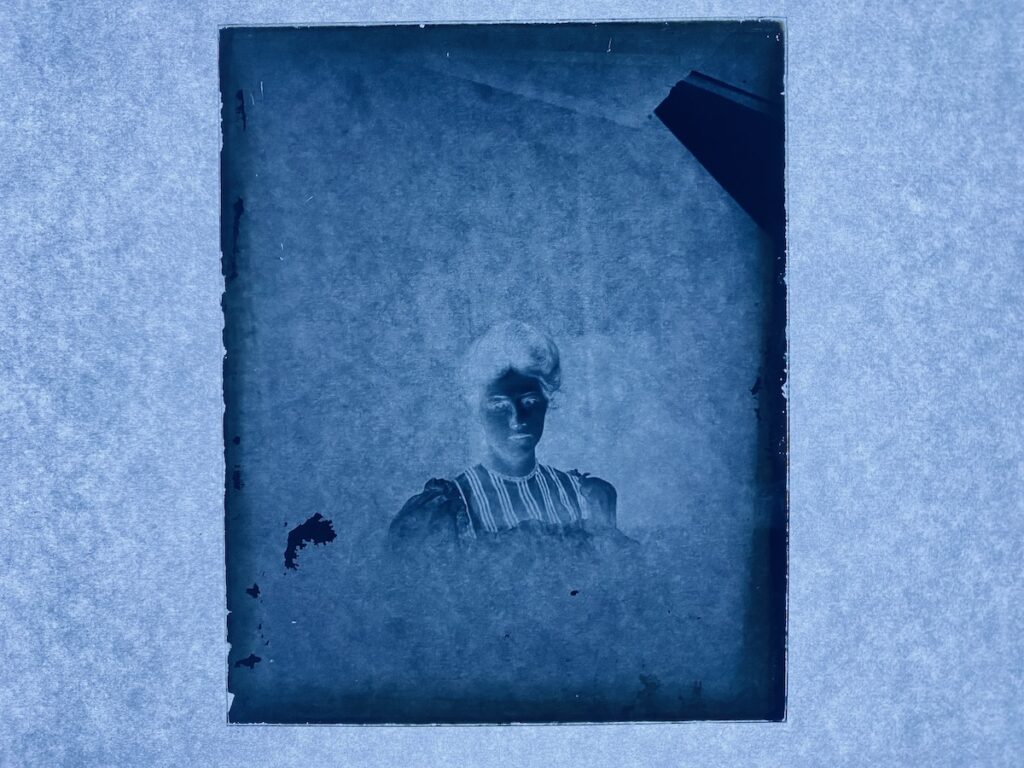
Edgar Cayce was born on this day — March 18, 1877 — on a farm in south Christian County to Leslie and Carrie Cayce. As a child, he displayed unusual abilities, like seeing spirits and fairies and being able to sleep on a book to remember its entire contents. These abilities would eventually develop into his gift of clairvoyance. Cayce discovered that he could put himself into a trance and tap into a universal knowledge or consciousness that allowed him to diagnose and offer treatments for complicated illnesses, provide specs for advanced technology, and even study the record of a person’s soul across numerous incarnations.
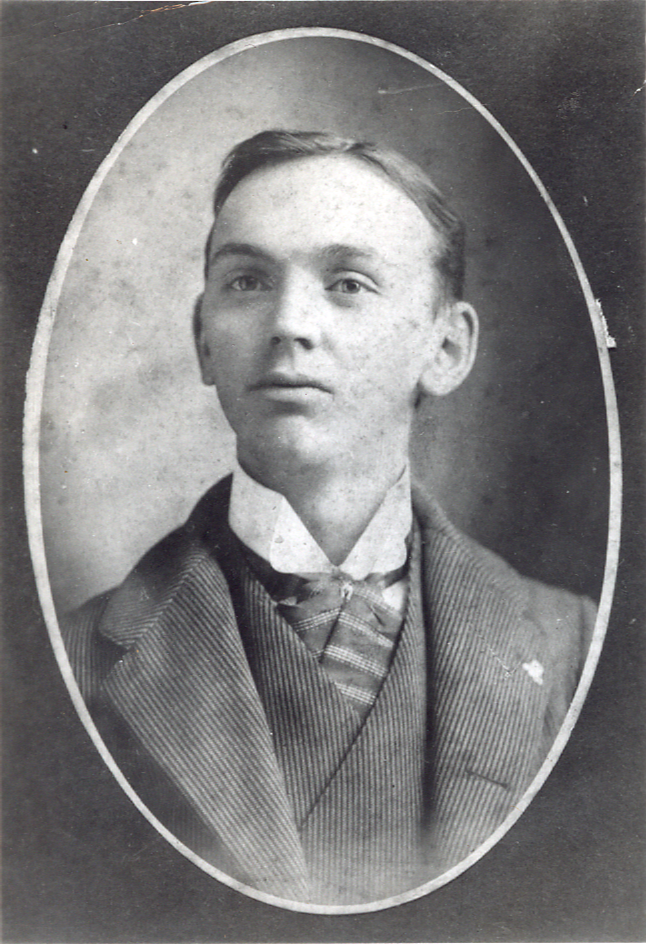
He gave more than 14,000 documented readings, as they are known, during his lifetime. The insight and expertise found within them continues to provide guidance and help to people all over the world. He earned monikers like the “sleeping prophet” and “the father of holistic health,” and his work is widely considered an influence in the New Age movement of the 1970s and ‘80s.
All from a guy born right here.
But Cayce didn’t set out to be psychic. At least, not at first. After working in a local book store and selling insurance, Cayce began a career as a photographer.
How he found his way into a darkroom is as much a story of his psychic abilities as anything. He moved into Hopkinsville with his family in the late 1890s and started working at Hopper Brothers Bookstore on Main Street. He was a favorite among customers. He seemed to have a knack for absorbing and remembering the inventory in ways that computers do today. But in 1900, he lost his voice. Descriptions of his ailment suggested laryngitis, but it continued for months. Doctors could not figure out what was causing his problem and, more importantly, why it wouldn’t heal.
The near-mute Cayce found new employment in the darkroom of Bowles Photography Studio. W.R. Bowles worked as a prolific photographer in Hopkinsville from 1888-1918, and Cayce worked with him from 1900 until he moved to Bowling Green in 1902. Under Bowles’ tutelage, he learned how to set, light and frame a photograph, and he learned how to develop glass plate negatives.
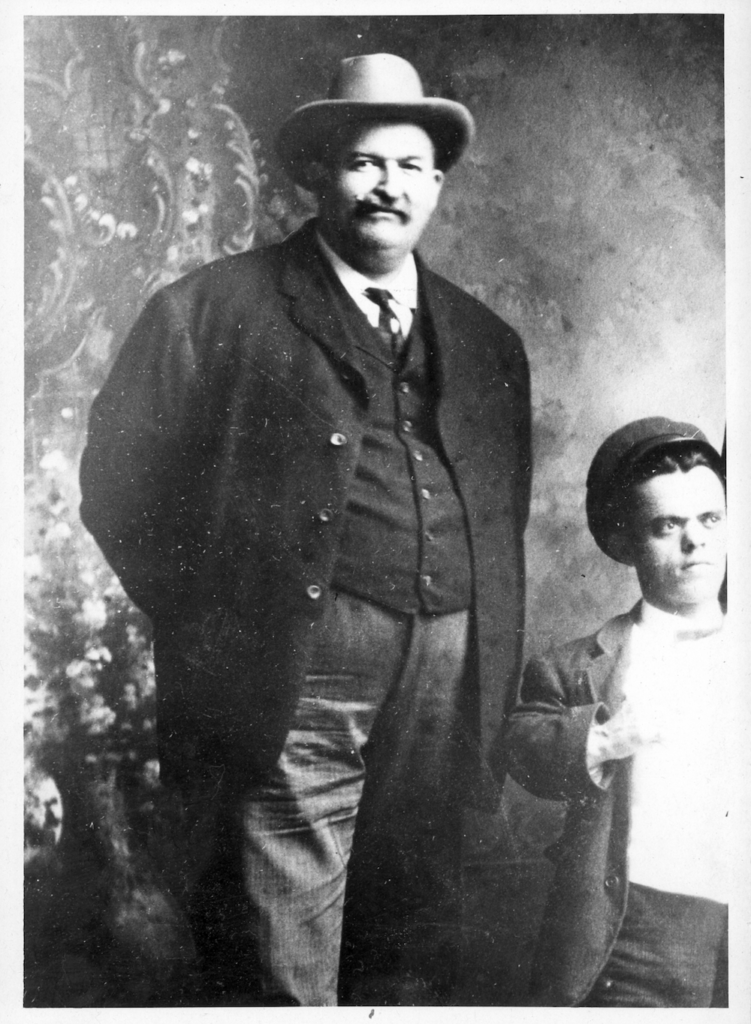
Glass plate negatives were a key part of an early photographic technique invented by Frederick Scoff Archer that consisted of spreading a flammable liquid called collodion onto a glass plate that was plunged into silver nitrate. This caused a reaction that turned the collodion into photosensitive silver iodide. The wet plate was exposed in a camera and then developed immediately. Once a glass plate was covered in the wet chemicals, a photographer only had about five minutes to take a photograph.
Thankfully, a dry plate method was invented in 1871 by R.L. Maddox. This meant that a glass plate was coated with a gelatin emulsion of silver bromide and could be stored before and after exposure for much longer periods of time. In addition, dry plates were commercially produced and came ready to use. When a glass plate treated with this emulsion was exposed to light through the camera, an image was captured and later developed in a darkroom. This method dominated the photography world from the 1880s until the 1920s.
Our glass plate negative is of this generation.
Cayce started his photography career with W. R. Bowles in 1900 when he was unable to speak. Working in a darkroom eliminated the need to communicate with customers. However, he regained his voice in 1901 in what would be his first successful psychic reading for health.
Early that year, a performer known as “Hart the Laugh King” came to Hopkinsville to dazzle crowds at Holland’s Opera House. Among other things, Hart was a hypnotist — or mesmerist as they were known at the time.
Coming in April: Alissa Keller’s “Snapshots in Time” column will be an assignment from Hoptown Chronicle readers. We recently polled readers about several possible column topics, and the overwhelming choice was a “long lost ledger from an old Hopkinsville stagecoach stop.”
Hypnosis was quite a fad at the turn of the century. During his show, it is said that Cayce was hypnotized. The waking, conscious Cayce still suffered from vocal paralysis; however, the sleeping, hypnotized Cayce spoke clearly. After much trial and error in hypnosis with local osteopath Dr. Al Layne, Cayce was put into a trance where he directed his body to heal itself from its vocal ailments.
And it worked. His voice returned, and his life changed forever.
He continued to work at the Bowles Studio, but he was brought out of the darkroom and put behind a camera. He started photographing events in the city — big things like when Teddy Roosevelt and William Jennings Bryan visited on their respective campaign trails. He took pictures of circus parades and people gathered for reunions. He was even the lead photographer on a special publication of the Pembroke Journal that showed off the homes, businesses and prominent people that made Pembroke a jewel in 1901.
Southern School of Photography
In 1902, Cayce moved to Bowling Green, where he worked for the L.D. Potter Company bookstore. He went into partnership with Frank J. Potter, a cousin of the bookstore owners, and they purchased a photography studio in 1904. Potter encouraged Cayce to study photography more seriously, so he enrolled in the first class at the Southern School of Photography in McMinnville, Tennessee.
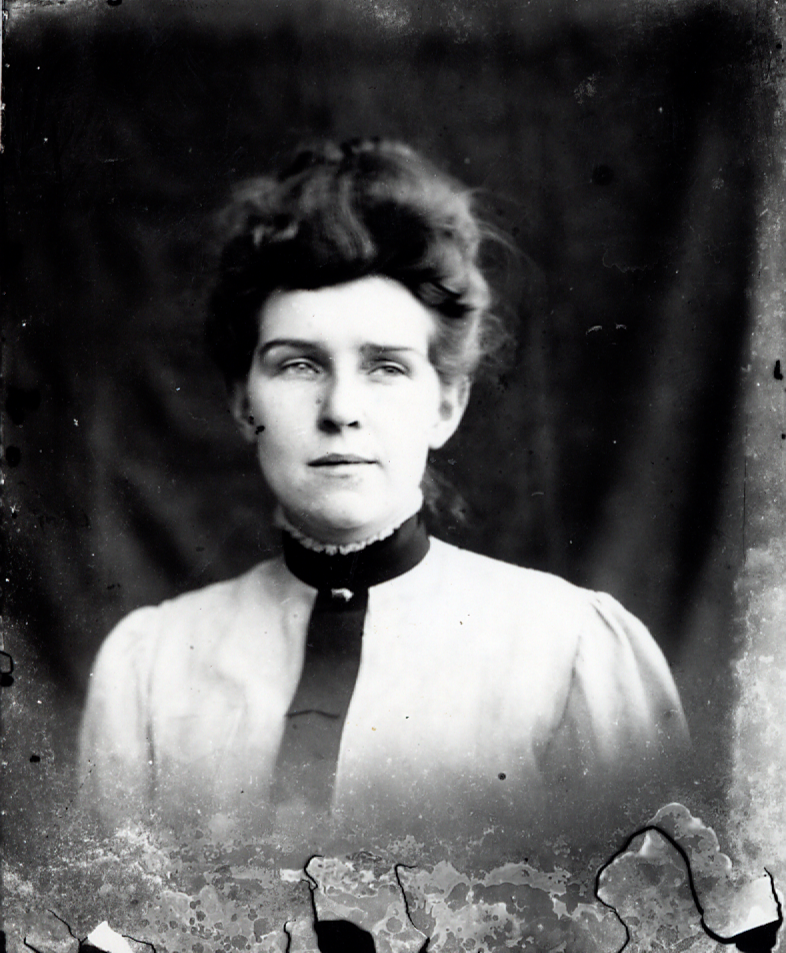
Operated by W.S. Lively, this photography school was one of the first of its kind to provide technical and artistic training to both male and female photographers. William Spencer Lively, known affectionately as “Dad,” also published on lighting techniques and darkroom processing, and he gained wide acclaim as an instructor for Army photographers during World War I.
Lively also invented what was at the time the world’s largest camera that could produce life-size photographic portraits by using glass plate negatives measuring 30 inches by 60 inches.
Whoa! Photographs from this camera have been placed in the permanent collection of the Smithsonian Institution.
Cayce studied at the Southern School of Photography for eight weeks in 1904. His education paid off quickly. Within a year, Cayce entered a photograph of a woman and son into a contest in the Ladies Home Journal magazine and won first prize!
Cayce’s keen eye for lighting and for capturing sincere, intimate moments with his clients became more distinct after his time at the school. The Southern School of Photography closed in 1928 after a devastating fire at the building.
Cayce Studio, Hopkinsville

Cayce worked as a photographer in Bowling Green until late 1910, when he was lured home to go into partnership with three men to establish the Hopkinsville Psychic Reading Corporation. Part of the agreement was that the men would outfit Cayce with his own photography studio in Hopkinsville.
Cayce opened Cayce Studio in an office on the second floor of the Thompson Building. Located next to the Bank of Hopkinsville, the Thompson Building stood on the east side of Main Street, just south of Seventh Street. He also had a psychic diagnostician office upstairs next to his photography studio.
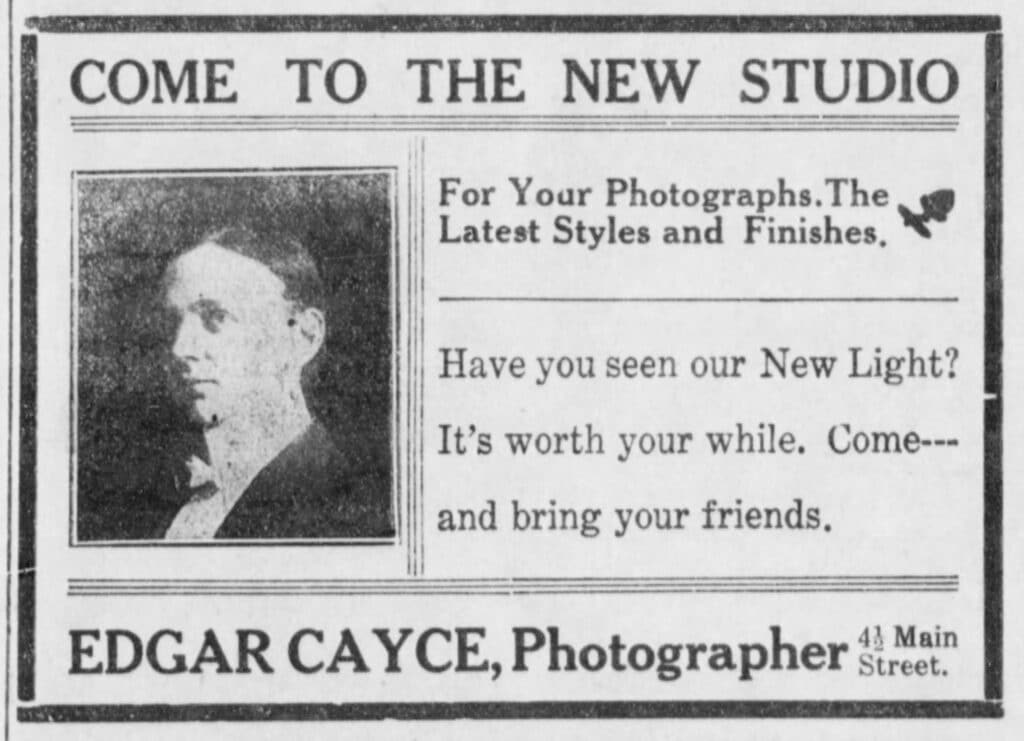
Our glass plate negative is believed to be from this studio. It is one of a few dozen that the museum is lucky to have in its collection. Most are portraits that show the advanced techniques that he likely learned in photography school. But also portraits of people we have not identified. The negatives were discovered in a box in the Thompson Building many years after Cayce died. That box was given to Christian County historian William T. Turner — and thankfully he entrusted them to the museum.
Cayce worked as a photographer and gave readings in Hopkinsville only through 1912. Bad blood with his business partners (one in particular) led him to break his contract and move to Selma, Alabama. He opened the Cayce Art Company there and stopped giving psychic readings for a time. Eventually, he moved to Virginia Beach and dedicated his life to helping others by using his psychic gifts.
After he left in 1912, Cayce only visited Hopkinsville — never making his home here again.
Cayce was born 147 years ago. Because he was a photographer, we have so many pictures of him, of his family and friends, and of his world. Seeing Hopkinsville through his eyes is one of the many gifts that this gifted man left for us.
Alissa Keller is the executive director of the Museums of Historic Hopkinsville-Christian County. She’s a graduate of Centre College with degrees in history and English and of Clemson University/College of Charleston with a master’s degree in historic preservation. She serves on the Kentucky Historical Society and the Kentucky Museum and Heritage Alliance boards.

